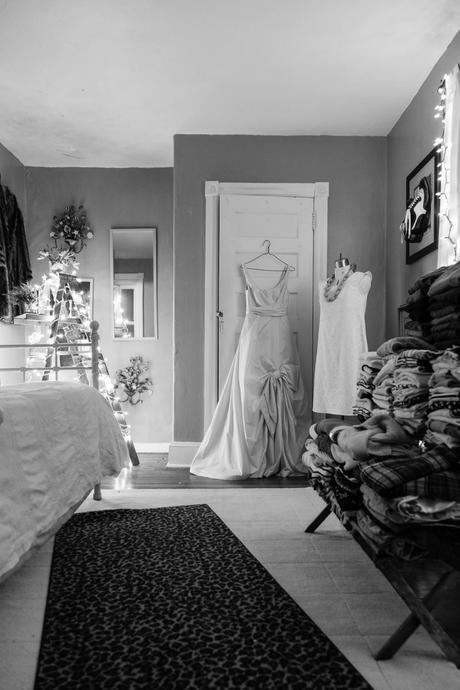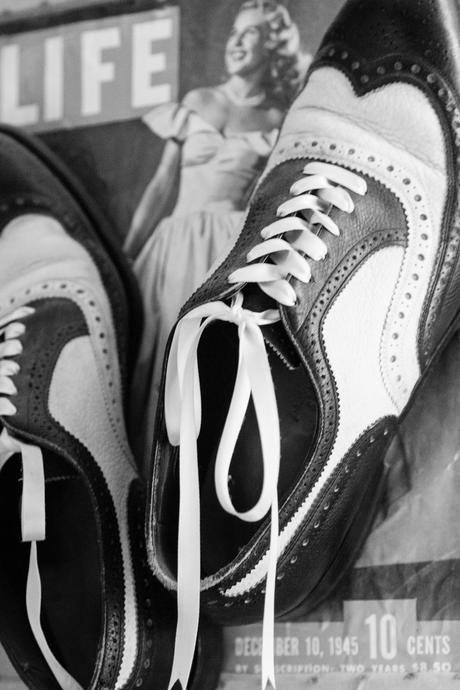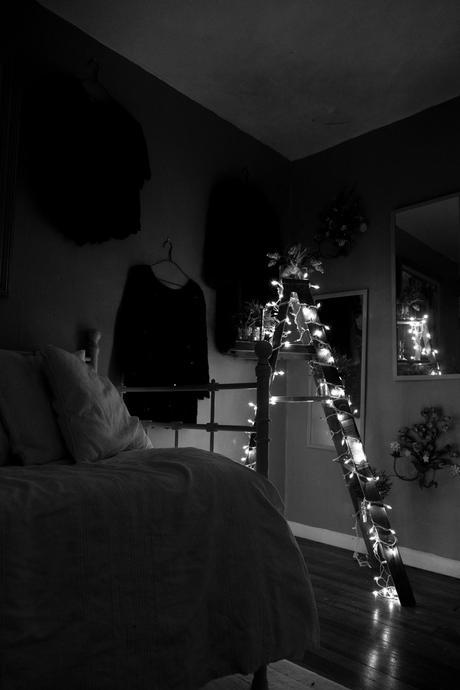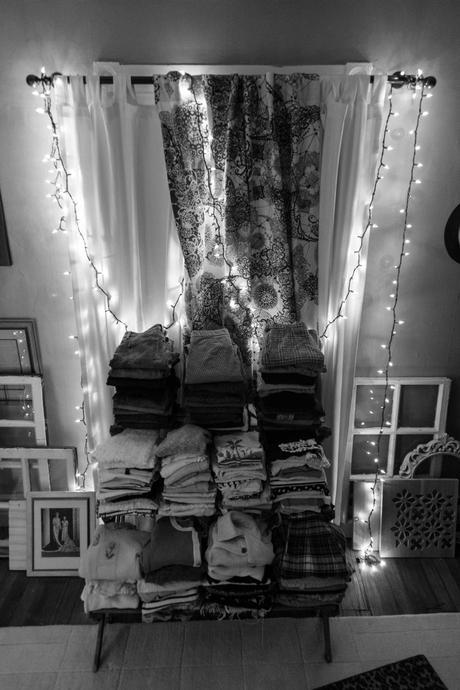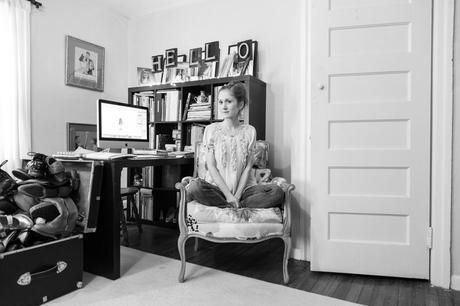
In every Portrait of a Seamstress, I’ve asked the subject if he or she had a mentor and if so, who were they and what did they teach them. In the last interview, I featured my mentor Mishka, a woman who left an indelible impression on my life and skills, and today, I’m ending the series with an interview of me. This is the progression I intended to take; it has a meaning behind it. By closing off with a Q&A of myself, I hope that I can be a mentor to everyone else.
Even though Portrait of a Seamstress is ending here on the blog, it’s just getting started elsewhere. Later this week, I will reveal how it is continuing in a more tangible form. It’s a huge project that I’ve been working on for about six months, and even though a large chunk of it is complete, I still have miles to go. I won’t say much, but I will say this, my goal for this project is that it’s an inspiration to both sewers and non sewers, a commentary and parody on the sewing world, and a source for mini pattern making tutorials. Also, when one door closes, another opens, so while this series is ending, another one is starting in January that is similar, but has a different focus. Stay tuned!
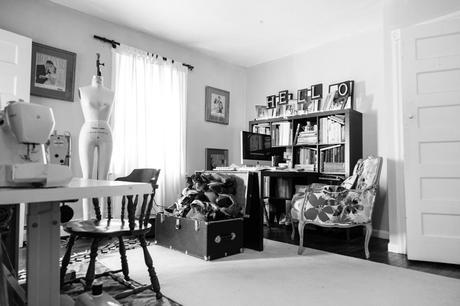

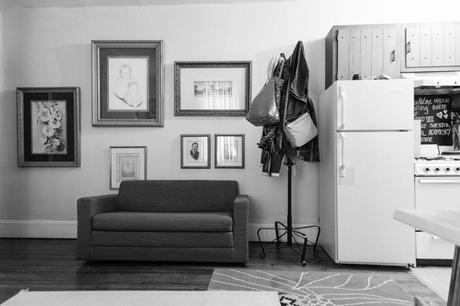

Hi, my name is Maddie Flanigan and I learned how to sew when I was 18-years-old. As I grow older, the moments I recall become fewer, but the memory of when I first came across a sewing machine is one I haven’t forgotten. I was a freshman at The University of Miami, and the Christmas holiday was particular long – I took my last final the first week of December and I didn’t go back until the last week of January. I wanted to do something useful with my time, but I hadn’t figured out how. On one of the first days of holiday break, I was looking for something in my mom’s linen closet who had just died six month before to breast cancer. On the floor was a hunk of metal that, and I’m embarrassed to admit this, I didn’t know what it was. I wasn’t a crafty, artsy-fartsy child – I was the furthest thing from that. Even though I had plenty of friends and an active social life, I was a study freak and science geek in high school. I took Organic Chemistry and Calculus my junior year and received a 100% in both classes. So, while I could balance an equation and draw parabolas, sewing a button was foreign, like giving a cheerleader a football. But I was always into fashion, so when I realized what the machine was, I decided to take up sewing. I could finally hem my jeans!
There was a neighborhood tailor, Mishka, who had a reputation for being good at what she does, but absolute nuts, like a mad scientist. While she pinned my clothes during a fitting, she recited the most far out stories. But Mishka was the only person I knew who knew how to sew, so with my mom’s Brother sewing machine in hand, I went to her for lessons. “You want to learn how to sew?” is what she said to me with a quizzical eye, and then she said, “let’s get started.” One thing lead to the next, and within three months time, I was working at her shop.
After about six months, I started to realize that sewing was what I wanted to do. So, to test the waters, I enrolled in The Art Institute of Ft. Lauderdale, which meant I was dual enrolled at The University of Miami and AI. The commute was brutal and after about a year, I knew I had to decide between journalism and fashion design if I wanted to save my sanity. I chose fashion design and applied to The Savannah College of Art and Design (SCAD).
Living in Savannah, Georgia was so much fun. I’ve always been a singular type of person, so moving to a city where I knew no one was an adventure. I became an adult in Savannah and I learned to take care of myself, all by myself. I remember coming down with the flu and having to drive to the doctors with a barf bag in my lap. Not a good look if you’re into fashion. I also bought a dog, a Dalmatian that I named Kate, and we had a blast going to Forsyth Park, Hilton Head, and Tybee Island. As for schooling. SCAD gave me a foundation in art that eventually served as the pavement for the road I was to travel. I took art history, 2-D design, 3-D design, and figure drawing (yes, I drew live nudes). Because I had worked in a tailor shop, the sewing aspect of my curriculum was a breeze. Sacchi Honda, my sewing teacher, recognized my already-there skills and allowed me to do my own thing. I entered into a design contest in which students were asked to take a garment, deconstruct it, and reconstruct it in a completely different context with less that $20. I bought a women’s suit and made it into a jumpsuit. By no means was it everyday wear, but it was fantastic! It even made it to the top 5 finalist (there wasn’t 1 winner).
Then the recession hit, and SCAD wasn’t financially possible. Luckily, Johnson and Wales in North Miami offered me a full scholarship for fashion merchandising, which I accepted. As part of their program, students have to complete an externship. Dreaming big, I applied to Urban Outfitters for a position in technical design. I think my mom was watching over me because I was offered the spot. I started off as an intern for Free People, but soon after, switched to Anthropologie. Even though I hadn’t graduated, I didn’t want to leave when the summer came to an end. I took a risk when I told them I wanted to continue, and I didn’t know if they would go for it, but they did, and offered me a position as an assistant technical designer.
For the next 2 and 1/2 years, I worked in several categories. For the first couple of months, I jumped around from skirts, dresses, pants, and tops, until I landed in jackets. For about a year, I worked with a Russian woman named Alla who eventually became one of my mentors. After jackets, I switched to the sweaters, knits, and intimates department, where I fell in love with the product. Because most sweaters are not cut and sew, but fully fashioned to shape, it was fascinated to learn the world of yarn, spandex, lycra, fashion marks, etc. Throughout this whole time, I always maintained my blog, Madalynne, and when the company wanted to start in intranet blog, they asked if I would be interested. I was hesitant to at first, because I wouldn’t be in the design world, but I took the job. I had a feeling that it would work out and luckily, it did. Today, I am the Internal Blogger for Urban Outfitters and I consider myself one of the luckiest employee. I have my dream job!
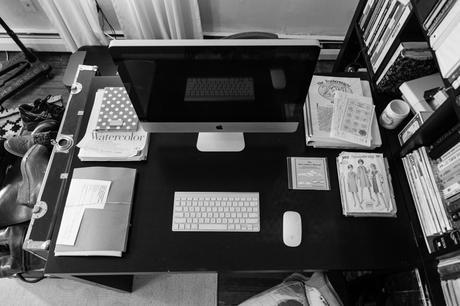
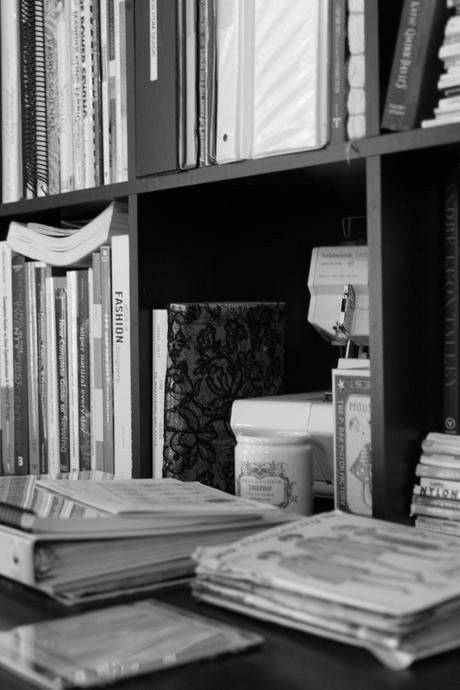

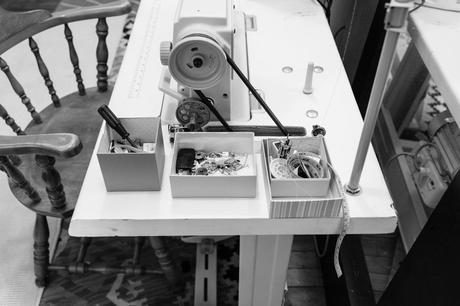

My dad is a constant mentor. His parenting is not direct, instead, he sets an example with his own life. He owns several restaurants in South Florida and growing up, I remember him working day and night at his stores. He spoiled me rotten as a child, rooootten!, but I always knew that it was his money, not mine, and I was in no way entitled to it. If I wanted the life in which I was raised, I had to earn it myself. Also, he is a no nonsense kind of man. Emails to him must be less than 3 sentences because after that, he doesn’t read them. This has taught me to not clutter my life with the same thing – nonsense. Only fill your life with the people and the things you want and can care for. Despite his seemingly big shot persona, P Fla as we call him (short for Paul Flanigan), is not like the Tinman – he has a heart. “Love you, Always Have, Always Will,” is what he wrote on the door to my room.
Mishka, of course, was and still is a mentor. She is a unique human being, one of the rarest I know. My generation, myself included, grew up with the notion that we are all very special characters in a very special story. We believed that if we made the right moves – intern, graduate from college, pay our taxes – then we will succeed. The funny thing about the world is that it’s not that easy and building a career is really hard. Great success requires years of blood, sweat, and tears, not pretty flowers and unicorns. This was the wake up call I got when I worked for Mishka. She was part of the generation that lived through the Depression and WWII, so she knew the value of economic security and living a meaningful life. When she was my age, her friends were dying while fighting in Europe. Most of my friends can’t even throw a punch. I was never right with Mishka, and I could always be better. I remember setting a sleeve six times, only to have her rip it out and have me sew it again. I almost cried. I wasn’t used to not getting an “A,” but she was right, my work at the time was a “C” level, and the only way I would get better is if she told me I was subpar.
Alla, the technical designer I worked under as an assistant at Anthropologie, was another mentor. She was originally from Russia, and her training was in flat patternmaking the old schools way – with a pencil, pen, and eraser. In most cases, the job of a technical designer does not involve performing the pattern corrections themselves, but communicating them to manufactures. A lot of technical designers make the mistake of thinking in theory. They think a certain pattern correction will work, but if they actually did it themselves, they would realize it wouldn’t. Many times, one pattern correction affects other areas of the pattern, and you can only know this if you get down and dirty and perform the correction yourself. Whenever I suggested a solution to a fitting problem, Alla would pull out a stack of post-its and say, “show me.” By using messy and non-proportionate quarter scale patterns, she wanted me to walk her through the corrections before I communicated anything with the manufacturers. In most cases, I ran into something I hadn’t initially anticipated.


My first pair of underwear! Looking back, I had no idea what I was doing, but at the time, I thought I knew everything. Fortunately and unfortunately, I blogged about it, so it will forever live as a comical embarrassment and also a reminder of how much I’ve learned since. I only wish I had the Photoshop skills I do now back then.
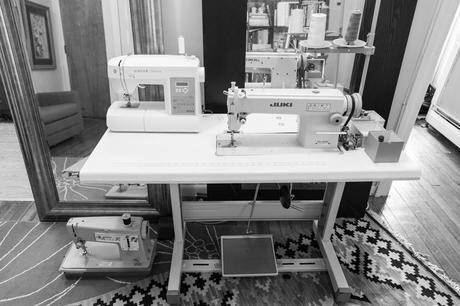

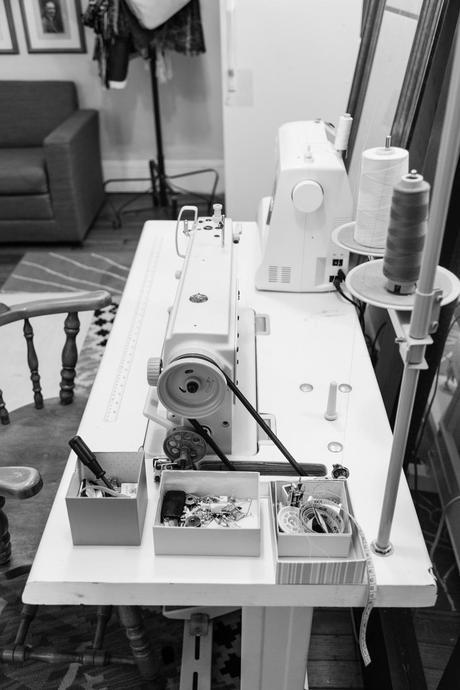



Bra making! I started sewing lingerie about a year and a half ago and I still don’t think I’m anywhere near good. Even though the garments are tiny, there is so much to them, and I’ve never been so challenged in my sewing career! I’m a masochistic seamstress, so I get a kick out of not feeling good enough. When I don’t feel accomplished, it motivates me to try harder and get better. I know every seamstress has to be bad before they can be good, and I’m hoping 2014 is the year that I become good at bra making.
